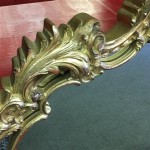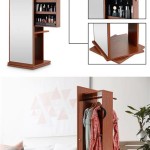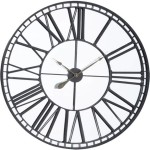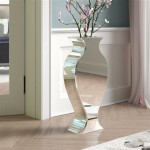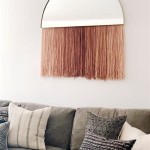Do Command Strips Hold Mirrors? A Comprehensive Guide
The question of whether Command Strips can reliably hold mirrors is a common one for renters, homeowners, and anyone looking for damage-free decorating solutions. The answer, as with many DIY projects, is nuanced. Command Strips are designed to provide a temporary, adhesive-based hanging solution, but their effectiveness for mirrors depends on several crucial factors. Understanding these factors is paramount to achieving successful mirror installation and preventing potential damage.
The Command brand, manufactured by 3M, offers a range of adhesive strips designed to support various weights. These strips utilize a pressure-sensitive adhesive technology that allows them to adhere to smooth surfaces without damaging or leaving residue upon removal. However, the advertised weight capacity and performance are contingent on proper application, surface preparation, and a clear understanding of the limitations of the product itself. Mirrors, by their very nature, present a unique set of challenges due to their weight, surface characteristics, and the potential for environmental factors to impact the adhesive bond.
Weight and Weight Distribution: The Critical Factor
The most important consideration when determining whether Command Strips can hold a mirror is the weight of the mirror itself. Command Strips are available in different weight classes, typically ranging from a few pounds to upward of 16 pounds per set of strips. The manufacturer's guidelines regarding weight capacity must be strictly adhered to. Exceeding the recommended weight capacity can lead to adhesive failure, resulting in the mirror falling and potentially causing damage to the mirror itself, the wall, or anything in the immediate vicinity. It's always advisable to err on the side of caution and select strips with a higher weight capacity than the actual weight of the mirror.
Furthermore, the weight distribution across the strips is crucial. A large, heavy mirror that places undue stress on a single strip is more likely to fail than a smaller, lighter mirror where the weight is evenly distributed across multiple strips. The shape of the mirror also plays a role. Long, rectangular mirrors, for example, may require more strips and strategic placement to ensure stability than smaller, square or circular mirrors. Proper planning and careful assessment of weight distribution are essential for a successful installation.
Before even considering Command Strips, it is highly recommended to accurately weigh the mirror. A bathroom scale can often suffice for smaller mirrors. For larger mirrors, a more robust weighing method may be necessary. Knowing the exact weight is the foundation for selecting the appropriate Command Strips product and determining the quantity needed.
Surface Preparation: The Foundation of a Strong Bond
The surface to which the Command Strips are applied plays a pivotal role in their adhesion and overall performance. Command Strips are designed to adhere to smooth, clean, and dry surfaces. This includes painted walls, finished wood, glass, tile, and metal. Textured surfaces, such as heavily textured wallpaper or porous brick, are generally not suitable for Command Strips, as the adhesive cannot effectively bond to the uneven surface.
Proper surface preparation involves several steps. First, the surface must be thoroughly cleaned to remove any dirt, dust, grease, or other contaminants. This can be achieved using a clean cloth and isopropyl alcohol. It is crucial to allow the surface to dry completely before applying the Command Strips. Moisture can interfere with the adhesive bond and significantly reduce its holding power. Avoid using household cleaners that may leave a residue, as this can also compromise the adhesive properties of the strips.
In addition to cleanliness, the surface should also be free of any loose paint or wallpaper. Peeling or flaking paint can cause the Command Strips to fail, as the adhesive will only be as strong as the bond between the paint and the wall itself. If the surface is freshly painted, it is imperative to allow the paint to cure completely before applying Command Strips, typically for several weeks. This ensures that the paint has fully hardened and will not be easily damaged by the adhesive.
Finally, consider the environmental conditions of the room. High humidity levels, such as those found in bathrooms, can weaken the adhesive over time. Mirrors installed in bathrooms or other humid environments may require more frequent replacement of the Command Strips or the use of a stronger adhesive solution altogether.
Mirror Characteristics and Frame Considerations
The mirror itself contributes significantly to the success or failure of using Command Strips. Frameless mirrors, while aesthetically appealing, typically offer a smaller surface area for the Command Strips to adhere to. This necessitates careful placement and potentially the use of a greater number of strips to compensate for the reduced contact area. The backing of a frameless mirror also influences adhesion. Some mirrors have a smooth, sealed backing that promotes good adhesion, while others have a more porous or textured backing that can hinder the adhesive bond.
Mirrors with frames generally offer a more robust surface for Command Strip application. The frame provides a larger contact area and distributes the weight of the mirror more evenly. However, the material and finish of the frame also need to be considered. Smooth, painted wood frames are generally ideal, while rough or unfinished wood frames may require sanding and sealing to create a suitable surface for adhesion. Metal frames should be cleaned thoroughly to remove any oxidation or corrosion that could weaken the adhesive bond.
The type of adhesive used on the back of the mirror itself can also affect the performance of Command Strips. Some mirrors are manufactured with a pre-applied adhesive that may react negatively with the Command Strip adhesive, leading to premature failure. In such cases, it is advisable to remove the pre-applied adhesive completely before applying the Command Strips. This may involve using a solvent or adhesive remover, followed by thorough cleaning of the mirror backing.
The size and thickness of the mirror glass should also be taken into account. Thicker glass is generally heavier and requires stronger adhesive support. Larger mirrors, regardless of thickness, exert more force on the adhesive bond due to their increased surface area and potential for wind resistance if placed near a door or window. These factors should be considered when selecting the appropriate Command Strips and determining their placement.
Before applying Command Strips to a valuable or irreplaceable mirror, it is recommended to test the adhesion in an inconspicuous area. This involves applying a small piece of the Command Strip to the back of the mirror and allowing it to cure for the recommended time before testing its holding power. This can help identify any potential issues with the mirror's surface or the adhesive compatibility before committing to a full installation.
Alternative Hanging Methods
While Command Strips offer a convenient and damage-free hanging solution, they may not be suitable for all mirrors or all situations. Several alternative hanging methods offer greater security and stability, particularly for heavier or more valuable mirrors. Traditional hanging methods, such as using nails, screws, or picture hooks, provide a more permanent and robust attachment to the wall.
For heavier mirrors, using drywall anchors or wall studs is recommended. These provide a much stronger anchor point than simply nailing into the drywall. Drywall anchors are designed to expand and grip the drywall, distributing the weight of the mirror over a larger area. Wall studs provide the most secure attachment, as they are structural elements of the wall. Finding and utilizing wall studs requires a stud finder and appropriate drilling equipment.
Specialized mirror hanging hardware is also available. These kits typically include heavy-duty hooks, wires, and mounting brackets designed specifically for hanging mirrors. They often incorporate safety features, such as locking mechanisms or anti-slip pads, to prevent the mirror from falling. These kits are generally more expensive than Command Strips, but they offer a significantly higher level of security and peace of mind.
Another alternative is to use a construction adhesive specifically designed for mirrors. These adhesives provide a very strong and permanent bond between the mirror and the wall. However, they are also more difficult to remove than Command Strips and may cause damage to the wall. Construction adhesives are best suited for situations where a permanent installation is desired and the risk of damage during removal is not a concern.
Ultimately, the decision of whether to use Command Strips for hanging a mirror depends on a careful assessment of the mirror's weight, the surface conditions, and the desired level of security. While Command Strips can be a convenient and effective solution in certain situations, it is crucial to understand their limitations and to consider alternative hanging methods when necessary.

Using Command Strips For Hanging A Mirror The Morris Mansion

Can You Hang A Mirror With Command Strips Hanging Heavy Pictures Large Framed Mirrors

Using Command Strips For Hanging A Mirror The Morris Mansion

Using Command Strips For Hanging A Mirror The Morris Mansion

How To Hang Heavy Mirrors Frames Without Nails 3m

Command Mirror Organizer Quartz 3m United States

How To Hang Heavy Mirrors Frames Without Nails 3m

Using Command Strips For Hanging A Mirror The Morris Mansion

Using Command Strips For Hanging A Mirror The Morris Mansion

Can You Hang A Mirror With Command Strips Hanging Heavy Oval Bathroom

